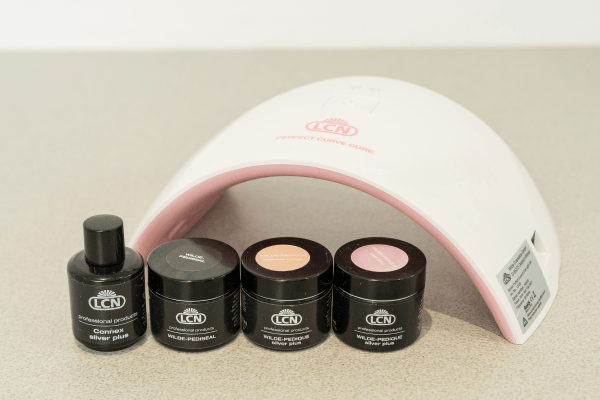Specialist Podiatry
We specialise in several distinct areas of Podiatry, including the following conditions:
Ingrowing Toenail Treatment
Most ingrown toenails can be managed effectively with conservative treatment, often carried out alongside a general podiatry appointment. This approach helps to relieve pain, reduce infection risk, and prevent the problem from worsening.
In some cases, you may be asked to send a photograph of the affected toe before your visit. This allows the podiatrist to assess the severity of the condition and plan the most suitable treatment in advance.
During your appointment, the nail will be carefully trimmed and reshaped to ease pressure on the surrounding skin. The area will be cleaned, and any hard skin or debris contributing to the discomfort will be gently removed. This is usually a straightforward and well-tolerated procedure.
If the ingrown nail is more severe or recurrent, a referral will be made to a local specialist for local anaesthetic and further treatment, ensuring you receive the most appropriate care for your condition.
Verucca Treatment
What is a Verruca?
A verruca is a small, rough growth on the sole of the foot caused by the human papillomavirus (HPV). They often develop a painful layer of hard skin over them and can be uncomfortable to walk on.
What does the treatment involve?
Verruca treatment can be carried out as part of a general podiatry appointment or as a separate session. To begin, the painful callus that forms over the verruca is gently removed with a sterile blade. This is not a painful procedure and helps to reduce discomfort immediately.
Once the callus is removed, the remaining tissue is treated using one of several methods: freezing (cryotherapy), a caustic agent such as strong salicylic acid, or a specialist solution like Verrutop. Your podiatrist will choose the most suitable option depending on your needs.
Before you leave, you will be given clear instructions and any necessary products to continue treatment at home. Regular follow-up appointments are usually recommended to achieve the best results.
Nail Reconstruction
Nail reconstruction is a specialist treatment designed for nails that have been damaged or affected by fungal infection. The procedure begins with the gentle removal of any dead or unhealthy nail, leaving a clean and healthy nail bed to work with. This process is not painful.
Using advanced LCN technology, a new nail is carefully rebuilt to restore a natural and healthy appearance. The reconstructed nail grows out just like a natural nail and typically lasts for around 6–8 weeks, depending on nail growth and lifestyle factors.
This treatment not only improves the cosmetic look of the nail but also provides protection as the natural nail continues to grow underneath.
PLEASE NOTE IT NOT POSSIBLE TO DO A RECONSTRUCTION IF YOU DO NOT HAVE ANY TOENAIL AT ALL.
Diabetes Foot Health Consultation
What is Diabetes?
Diabetes is a condition that can affect circulation and nerve supply in the feet, increasing the risk of complications if problems go unnoticed. People with diabetes should have regular foot check-ups to help prevent issues from developing or worsening. Even if you are pre-diabetic, caring for your feet is an important step in protecting your long-term health.
What does the appointment involve?
A diabetic foot check-up is a straightforward but vital appointment. It includes:
Monofilament test – to check for any loss of sensation (neuropathy) in the feet.
Doppler machine test – to assess the circulation by measuring the pulses in your feet.
Visual examination – to check the skin, nails, and overall foot health.
Advice and treatment – practical guidance to help you care for your feet and reduce risks.
Regular diabetic foot care not only helps prevent serious problems but also gives you confidence that your feet are healthy and well monitored.
For more information on Diabetes and foot care, please go to the InDependent Diabetes Trust website.
Misaligned Toe Care
Sometimes toes can become bent or out of line which can make them sore, rub in shoes or cause hard skin and corns. These changes are quite common and can affect one or several toes.
The main types are:
Hammer toes – where the middle joint of the toe bends upwards, making the toe curl and often rub against the top of shoes.
Bunion joints – when the big toe leans in towards the second toe, creating a bump on the side of the foot that can become swollen or painful.
Claw toes – where the toe bends at both joints, curling downwards so the tip presses into the ground or footwear.
How can they be treated?
There are many simple, effective ways to ease discomfort and prevent problems from getting worse.
These include:
Taking pressure off sore areas – using soft padding, insoles/orthotics or special footwear to spread weight more evenly across the foot.
Preventing rubbing and corns – choosing comfortable shoes with enough space for the toes, using protective dressings and having hard skin treated.
Silicone props and splints – we can create small, custom-made devices to gently support the toes, stop them overlapping and reduce painful pressure points.
At your appointment, we will advise on the best course of action for your particular condition, making sure your feet become comfortable and you can remain active.





















